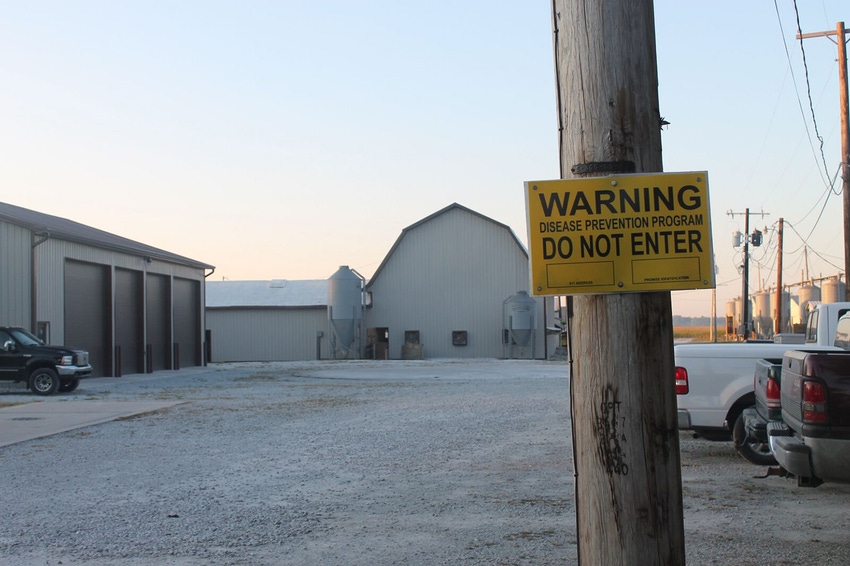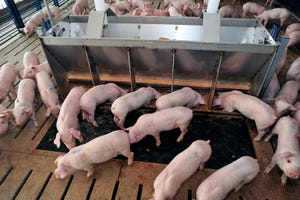Strep zoo spread different from what was previously thought
Pathogen has not only impacted sow herd biosecurity protocols; high mortality outbreaks have weighed on staff mental health.

Before 2022, veterinarians believed the spread of Streptococcus equi subspecies zooepidemicus was most likely due to fomites, domestic animals, birds, wildlife or surface water. However, after a series of very severe Strep zoo outbreaks in Canada, Matheus Costa, lead researcher and adjunct professor at Utrecht University, says humans could have been a vector.
“Truly the way we understood this until 2022 … is that one of the animals were likely bringing in Strep zoo into the barns, so we tested them and we never truly detected anything,” Costa said. “We were missing one very important animal, that has complete and free access to anywhere in the barn and outside the barn, which were humans."
Costa shared his investigation into how this pathogen has spread through sow herds across Western Canada during a recent Swine Health Information Center/American Association of Swine Veterinarians webinar.
Testing of N95 masks from staff working in Strep zoo positive barns had barely detectable DNA present in those samples, but led to the question if it was coming from whoever's wearing the mask or is this just environmental contamination? Costa and his team decided to swab humans and perform the same test, finding a decent amount of Strep zoo in those samples.
“There was barn staff that were extensively exposed to infected animals and obviously secretions coming out of them during an initial Strep zoo outbreak years ago, and this individual transited to three different sites over three years, and unsurprisingly, all three sites that this individual went to actually broke with Streptococcus zooepidemicus,” said Costa. “We don't know if this person was colonized before the initial break or during the initial break, but this person definitely remained positive for Strep zoo for at least three years.”
The incidence of Strep zoo jumping to humans has been reported multiple times, particularly for those working closely with horses. Ingestion of raw pork, could also be a risk factor for exposure to Strep zoo.
“It's not news that animals can give humans Strep zoo. What we learned here though is that there was a cycle where animals likely gave humans Strep zoo, and these humans gave animals Strep zoo back, so this cycle was unique,” Costa said. “We have zoonotic diseases, so those are going across species here from animals to humans, but we're seeing here is a case of amphixenosis, these are diseases that can go both ways.”
With this knowledge in hand, Western Canadian producers are now working on improving their biosecurity plans. This includes having visitor travel records, making pre-visit recommendations and testing water sources.
The pathogen has not only impacted sow herd biosecurity protocols in Western Canada, but the high mortality outbreaks have weighed on staff mental health.
“No one can keep doing this during outbreaks, from dealing with deaths to treating animals. Lots of abortions is another thing we observe, and obviously it's extremely costly. It costs millions of dollars, depending on the size of the herd,” Costa said.
While staff may see pigs vomiting or see a case or two of meningitis, Costa said it truly looks like the animals want to “chill in a corner and do nothing. They have very high fever and they will rarely respond to simulation, and they'll just corner and pile and try not to eat or move very much during this period.”
Since Strep zoo requires direct transmission, nose-to-nose contact is needed. Control animals do not develop the disease just by sitting in the same room as the inoculated animals.
Costa hopes diagnostics will improve as the industry keeps learning more about Strep zoo.
“Diagnostics of Strep zoo truly starts with clinical history and obviously clinical signs and postmortem lesions, and your two options laboratory confirmation nowadays are culture or PCR," Costa said. "PCR may or may not be available just because this is an emerging pathogen and not every lab may be inapt to deal with it for now and isolate identification following culture is also challenging in some locations, since Strep zoo may be misidentified as Streptococcus species or Streptococcus suis.”
About the Author(s)
You May Also Like





